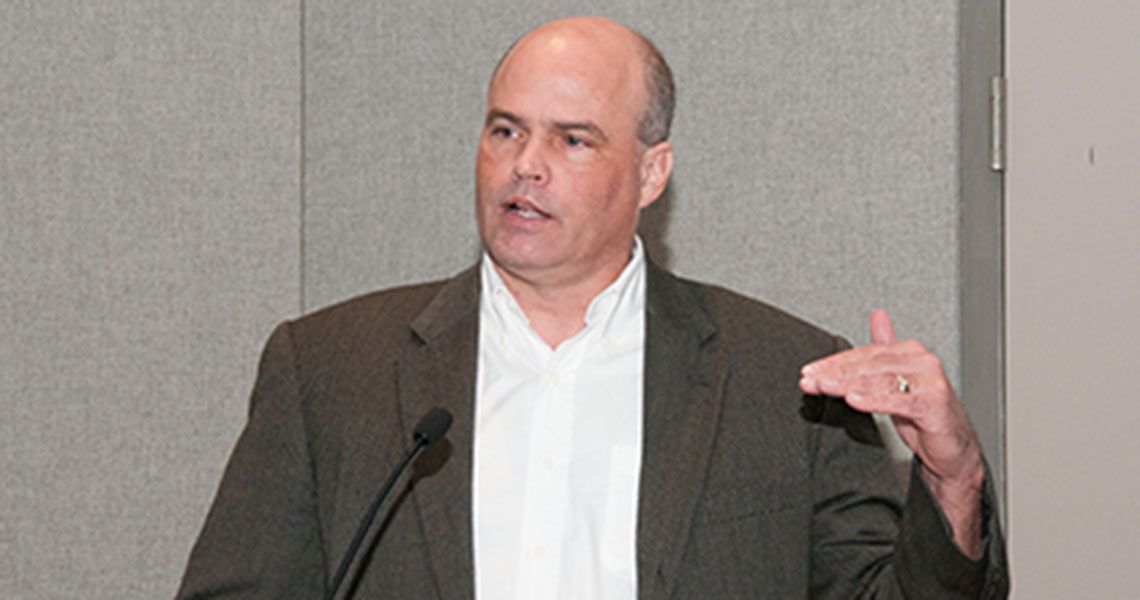An image of Kurt Cobain, frontman for the grunge band Nirvana, flashed onto the projection screen. “A lot is known about Cobain,” said Thomas Joiner, M.D., Robert O. Lawton Distinguished Professor of Psychology at Florida State University. “What isn’t known is how phobic a child he was.” Joiner explained that the musician, renowned for his death by self-inflicted gunshot wound in 1994, exhibited severe phobias of heights, needles, and guns throughout his childhood.
“How did the child afraid of needles become of the man who used them every day to self-inject heroin? How did the child afraid of heights become the man who would climb scaffolding during concerts and dangle 50 feet above the crowd? How did the child deeply afraid of guns become the man who owned and collected them?” Joiner asked. “What happened to him in every case, I would suggest, is habituation to a potentially dangerous stimulus, along with the development of an active appetite regarding dangerous things.”
Joiner, author of “Why People Die By Suicide” and “Myths About Suicide,” delivered the 20th anniversary Seymour Perlin, M.D. Lecture on Suicidology and Life-Threatening Illnesses to medical students, psychiatry residents, and faculty of the George Washington University School of Medicine and Health Sciences (SMHS), Oct. 31. Perlin, Professor Emeritus of Psychiatry and Behavioral Sciences at SMHS, directed the school’s psychiatry residency program from 1977 to 1993 and is a pioneer in the field of suicidology.
During his lecture, Joiner outlined the model he and his colleagues have developed to explain why people die by suicide. “There are hundreds of risk factors for suicide,” Joiner acknowledges, “but everyone who ends up dead by suicide, no matter the disorder, travels through a last catastrophic pathway of fearlessness combined with perceived burdensomeness and thwarted belongingness.”
Joiner defines perceived burdensomeness as believing one’s death will be worth more than one’s life to other people, and he defines thwarted belongingness as a feeling of deep alienation from others. “When those two states are intractable, people develop the desire for suicide,” Joiner explains.
Through clips from the 2006 documentary film “The Bridge” — which consists of the results of filming the Golden Gate Bridge for one year, capturing a number of suicides — Joiner demonstrated that even extreme desire for suicide cannot be acted upon without an accompanying fearlessness. “It’s only in this little area of overlap that you get these very catastrophic outcomes,” he said.
Joiner closed the lecture by citing a study suggestive of the impact of belongingness on suicide rates. The study followed 1 million Norwegian women for 15 years and indicated that women with six or more children, despite the stress of having such large families, had one-fifth the risk of suicide as compared to other women. “One plausible explanation is the sense of belongingness inherent in having that many children,” Joiner proposes. “This illustrates a general empirical principle that fear and its absence are important to reckon with in a full understanding of suicidal phenomena.”



